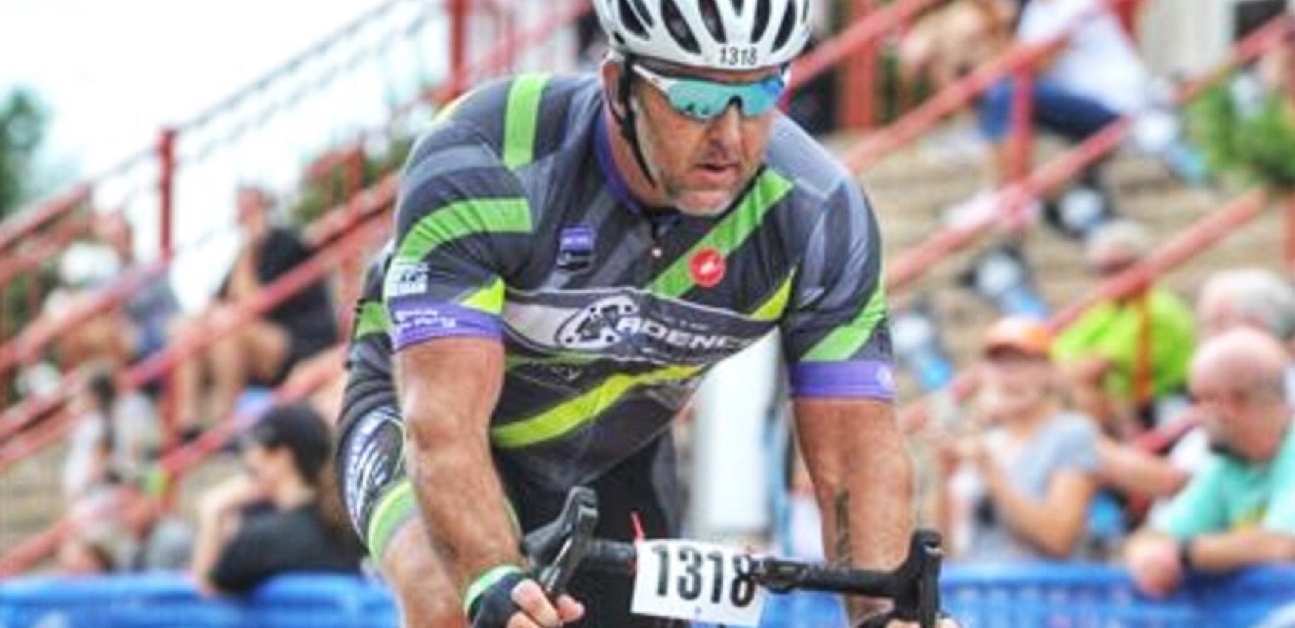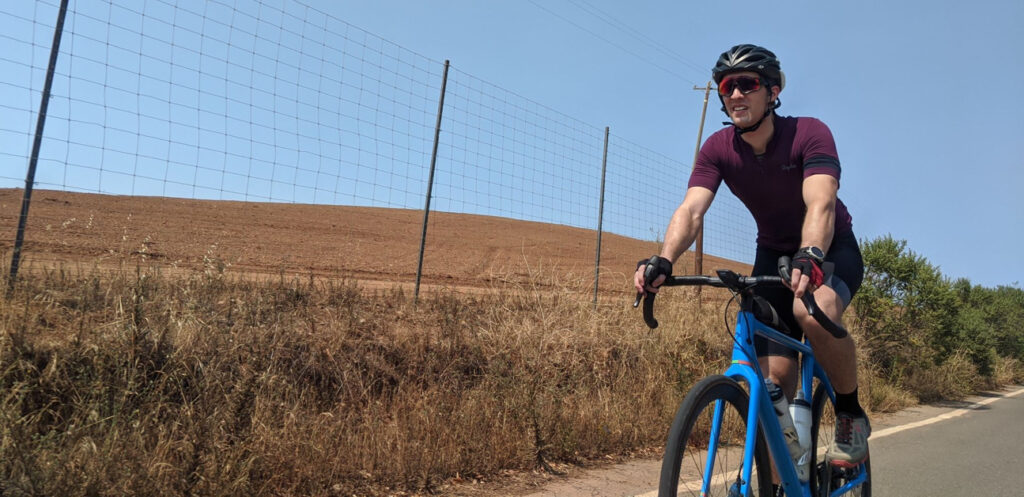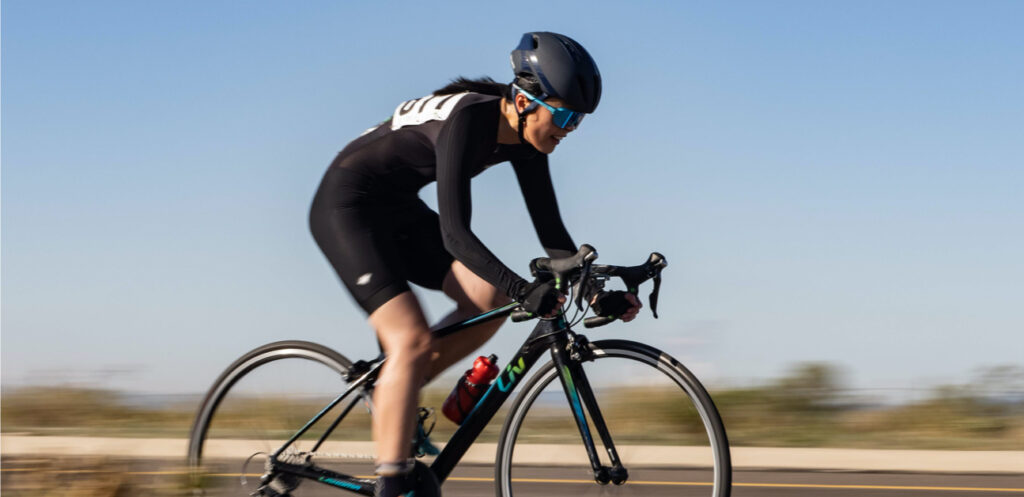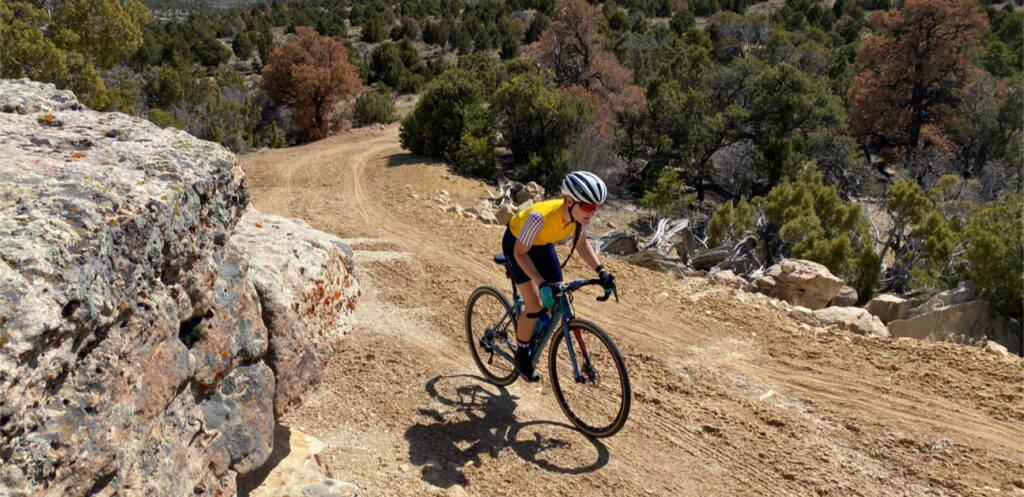How an Ordinary Cyclist Increased Their FTP by 100 Watts

Elite athletes aren’t the only cyclists that benefit from structured training. For Brad Kundracik, balancing life commitments and training meant that he needed an efficient way to grow his fitness. Using TrainerRoad, Brad added 100w to his FTP, lost 35 pounds, and almost doubled his watts/kg. This ordinary cyclist saw some impressive results, and he has some advice for anyone trying to make the most of their time.
Share your success story and tell us how TrainerRoad helped you reach your goals.
Getting Started With Cycling
Brad didn’t go searching for cycling, but after noticing his increasingly sedentary lifestyle, he didn’t like what he had become. With a new office job and two small children, Brad experienced the familiar gradual weight gain and decided he needed to do something. He joined an indoor spin class and eventually was invited on a group ride.
Brad bought a bike, rode more, and completed the Hotter’N Hell Hundred event. At this point, he was wholly captivated by cycling and began searching for his next goal. Brad set his sights on The Chupacabra 200, which is the Hotter’N Hell Hundred combined with a 100km gravel ride. Taking on a challenge of this magnitude, Brad knew he needed some structured training.
Adaptive Training
Get the right workout, every time with training that adapts to you.
Check Out TrainerRoadAfter doing some research, Brad found that he had a friend that was using TrainerRoad. Using Refer-a-Friend, Brad signed up for a free month and never looked back.
Training With Limited Time
Brad started with a low-volume training plan because it gave him the flexibility to add in unstructured, outside rides. At first, starting structured training wasn’t easy. Brad says that it was hard because he wasn’t used to it, but “over time it got easier, and you get better and better. Then you take your second ramp test—you have progress almost immediately.” Starting with an FTP of 268w and seeing it grow to 365w helped fuel his motivation to push even further.
Having enough time for each area of life is a challenge for many cyclists. But Brad’s philosophy is if something’s important, you make the time. So he would get on the bike at 4 AM because that was the only time he had. He added, “I could use TrainerRoad because it made the most of my time.”
Brad’s advice to anyone balancing family, work, and training is to remember that having better fitness will make you better at all three. He said, “When my fitness was at its worst, I wasn’t very motivated at work, and while I wasn’t a bad husband/father, I certainly wasn’t the best that I could be.” If you make time for fitness, the gains will make your quality of life much better in all phases of life.
Key Takeaways
- Find a dedicated time to train where other priorities can’t interfere.
- If you’re just starting with structured training, begin with a Low Volume plan to help ease your way into the work. Progress will come quickly.
Losing Weight
Starting out at 262 pounds, Brad admits he “didn’t know anything about dieting.” In the beginning, he held onto the idea he could eat anything because he was burning a ton of calories on the bike. With fluctuating weight, Brad focused on cutting out junk food and started eating healthier. To keep it simple, he didn’t track calories and took a long-term perspective on weight loss. But one lesson he learned quickly was to fuel his workouts.
Working out so early in the morning made it hard to fuel beforehand. Brad started training with fasted rides, but looking back, he admits it was a huge mistake, “fueling my workouts made a huge difference.” He began by using a carbohydrate drink mix during the workout and then started to eat a banana or small snack before getting on the bike. Not only did Brad notice the workouts seemed more manageable, but it helped his mental state throughout the day. Throughout his training plan, Brad lost over 30 pounds and doubled his w/kg.
Key Takeaway
- Fueling your workouts is key. Even if you workout early in the morning, a small snack before getting on the bike and then eating during the workout is will help make workouts feel more manageable.
Challenges of Training and Hitting a Plateau
Brad took a break from structured training and consequently hit a plateau. When the pandemic canceled his events, Brad just started riding aimlessly outside. It’s good to take a break from time to time, but he noticed “the lack of structure made me slower.” Brad examined what was holding him back and realized that “the times when I was getting faster were the times that I was consistent in my structure. I knew what I needed to do.”
Another challenge for Brand concerned his performance in events. When an event didn’t go the way he wanted it to, he would get frustrated. This led him to add more volume than he could handle. As a result, he’d overwork himself and end up with a setback. Brad says that he “had to learn to be consistent, be patient, and the results will come.” Training is hard, and there are going to be times of failure. Brad’s advice—embrace failure as a learning opportunity and not to worry because you’ll get better.
Key Takeaway
- Understand that progress isn’t linear. Setbacks are inevitable, but having a long-term plan that includes structure can help you stay confident, motivated, and avoid plateaus.
Additionally, it helps to have a community of support. Brad credits his riding friends with Team Cadence Cyclery and local bike shop Velo Cafe for his growth. He said, “They’re much, much stronger riders than I am, but they’ve kind of taken me under their wing by pushing me and listening to my questions.” A good support network can help you stay motivated even when you’re struggling.
Future Goals
With another child on the way, Brad is planning for the future. As a personal goal, he wants to get to 4 w/kg. When cycling events start back up, his A event will be the Chupacabra 200 at the Hotter’n Hell Hundred in Wichita Falls, Tx. Until then, Brad is going to continue with TrainierRoad and reaching for new goals.
Tell us your story. Success isn’t always a race win. It can be life-changing health improvements, reaching a personal goal, or more.
For more cycling training knowledge, listen to Ask a Cycling Coach — the only podcast dedicated to making you a faster cyclist. New episodes are released weekly.


